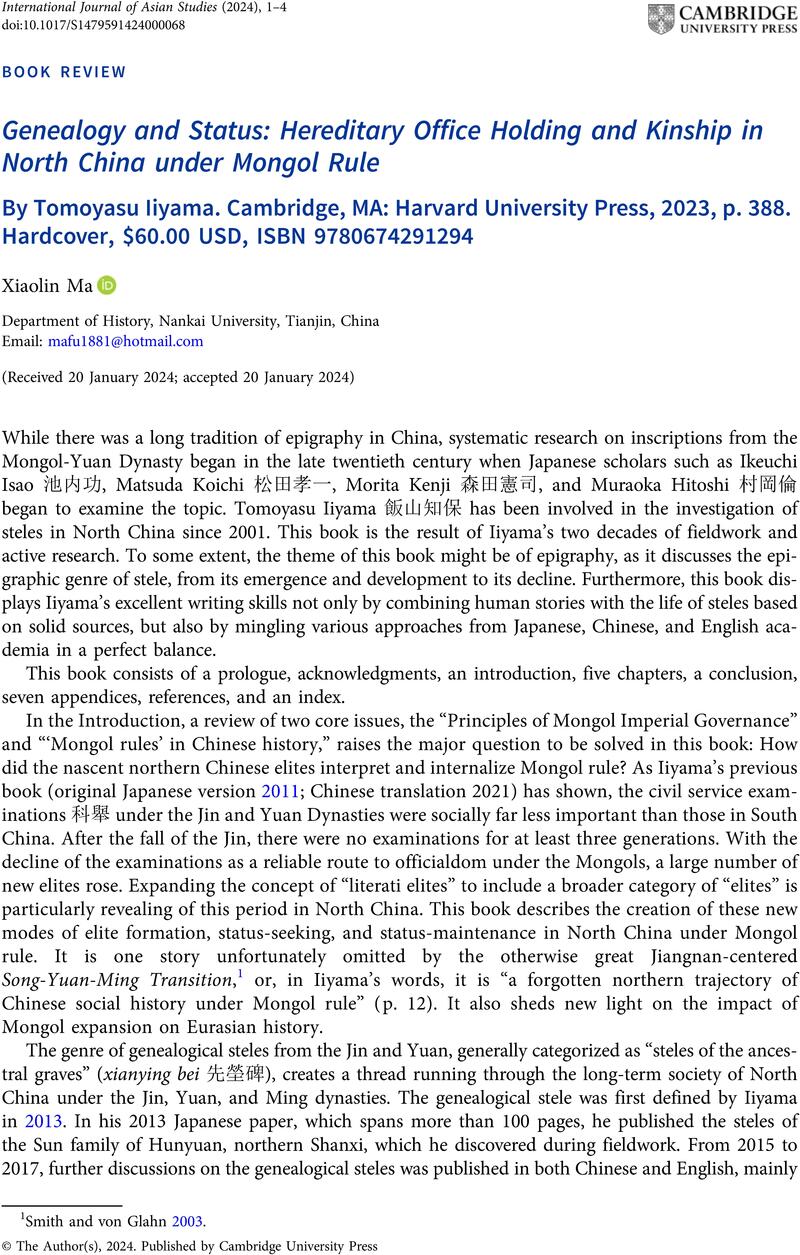Iiyama, T. (
2018). Xiyin wengao suojian Yuan Ming jiaoti yu Beiren guanliao 《西隐文稿》所見元明交替與北人官僚. In
Shi zhi shisan shiji Dongyashi de xinkenengxing: shoujie Zhong Ri qingnianxuezhe Liao Song Xixia Jin Yuan shi yantaohui lunwenji 十至十三世紀東亞史的新可能性: 首届中日青年學者遼宋西夏金元史研討會論文集. Ed. Yu Wei 余蔚, Hirata Shigeki 平田茂樹, and Wen Haiqing 温海清. Shanghai: Zhongxi shuju 中西書局, pp.
347–81.
Google Scholar 